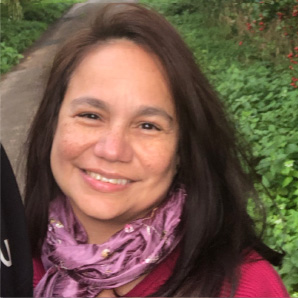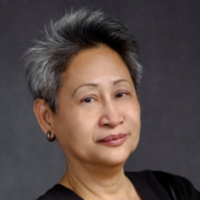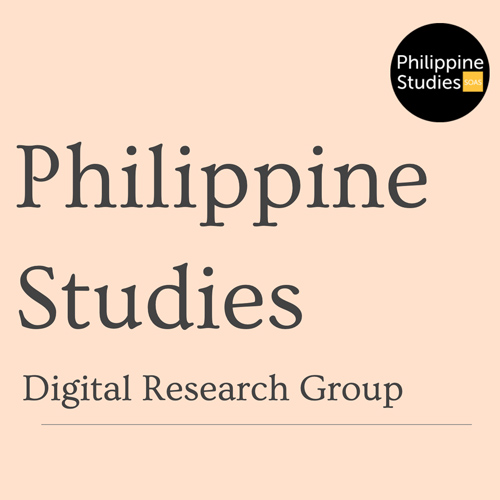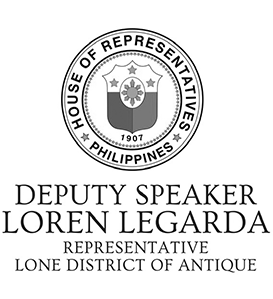About
This digital humanities project is a visual inventory of Philippine objects dating to the mid-20th century which are in holdings of museums and private collections outside of the Philippines. The open access online inventory gathers photographic and textual information about these objects and aggregates the data in an easy-to- navigate, all-in-one sortable portal.
Beyond the creation of a consolidated database of baseline information culled from holding institutions’ photos and catalogue entries, the project also introduces annotations by respected Philippine scholars for object entries that may be inaccurate, misinformed or archaic ( e.g. the use of Negrito, or in some cases, the pan-regional term Igorot, where a more specific ethno-linguistic group might be identified.)
Additionally, the project also hopes to bring together discrete objects from different museums and curating digital exhibits that bring thematic links to surface. The curation of these links and the tangents within the global database will draw out substantive correlations, deploying cross-referenced, inter-textual, trans-disciplinary analyses. The site hopes to open a discursive field around these widely-dispersed Philippine objects and expect to contribute to filling myriad lacunae in this field.
An ever-expanding project, work on the database will involve continually seeking to identify, document and annotate as much data that is made available. We have also created an In Conversation section which documents co-curated interactions between culture bearers and the digital objects, as well as contributions from scholars of material culture studies, history, art history, anthropology, archaeology, political science, and the other human sciences.
Parameters
Philippine material culture is here defined in its widest sense. It includes objects that have been made in the Philippine Islands, as well as objects that are related to the Philippines either through consumption, trade, exchange as well as aesthetic, domestic, or ritual use.
For the purposes of this research, this expansive definition will only exclude
a) unaltered or non-ritualized natural objects like botanical or animal specimens
b) texts and photographs via mechanical production
c) Philippine objects created beyond the 1950's
Manuscripts, photographs, and hand-made maps of particluar relevance to an understanding of inventoried objects will be included as archival references.
Background and Purpose
The current digital humanities project takes its cue from several earlier attempts to create consolidated, inter-institutional archives. The Global Inventory of Filipiniana Artefacts, Works of Art, and Selected Documents (1998 - 2000), was a project undertaken by the National Centennial Commission (NCC), formed to celebrate the centennial of the declaration of Philippine independence (1898 –1998).The Inventory was the project the NCC undertook with the Department of Foreign Affairs (DFA), and was conceptualized and implemented by independent curator Marian Pastor Roces, under the sponsorship of Senator Leticia Ramos Shahani. Madame Shahani was former Assistant Secretary-General of the United Nations.
At that time, in the second half of the 1990’s, the museums had yet to switch to digital databases, and institutions to phase into the world of creative commons licenses and a general trend towards shared knowledge. Using only pertinent parts of the Accession Records in whatever form available (photocopies of index cards or print-outs) and photographs when possible, the output of the inventory, deposited with the DFA and the National Museum of the Philippines, would only have a limited reach. Regalado Trota Jose provided the project with a substantive report on the holdings of a vast number of Spanish museums which resulted in a handsomely produced volume on Discovering Philippine Art in Spain. But the publication was a limited-edition, and again, difficult to disseminate.
The purpose of this project is to provide open access. The consolidated inventory takes advantage of digital technology, almost limitless storage capacity and data and images now available in the Public Domain and under Creative Commons licenses. Similar to Europeana and other aggregating sites, this database is accessible to anyone and hopes to provide a powerful research tool for the study of Philippine political, economic and history through its material cultures.
Sensitive Content
Mapping Philippine Material Culture collates digital material from institutions, and some of this material is inherently colonial and contains words, terms and phrases that are inaccurate, derogatory and harmful towards Filipino and Filipino diasporic communities. Catalogue transcriptions, book titles, exhibition titles and museum titles may contain harmful terms. We recognise the potential for the material to cause physical and mental distress as well as evoke strong emotions. Owing to the scale of the collection’s data, a process to implement sensitive-content warnings in the displayed data is still incomplete. The material within the catalogue does not represent Mapping Philippine Material Culture’s views. Mapping Philippine Material Culture maintains a strong anti-colonial, anti-racist position and affirms its support for centring the humanity of historically marginalised and disenfranchised communities.
People
 Dr Maria Cristina Juan is the project’s lead researcher, editor, coordinator and chief liaison. She is the project head for Philippine Studies at SOAS (PSS), a non-degree granting entity, under the Centre of South East Asian Studies at SOAS. PSS is an interdisciplinary forum for Philippine-related teaching, research and cultural production in the UK. It functions as a resource and networking hub and as a research gateway, as it creates avenues for sourcing and inscribing annotative knowledge from cultural originators in the Philippines.
Dr Maria Cristina Juan is the project’s lead researcher, editor, coordinator and chief liaison. She is the project head for Philippine Studies at SOAS (PSS), a non-degree granting entity, under the Centre of South East Asian Studies at SOAS. PSS is an interdisciplinary forum for Philippine-related teaching, research and cultural production in the UK. It functions as a resource and networking hub and as a research gateway, as it creates avenues for sourcing and inscribing annotative knowledge from cultural originators in the Philippines.
 Marian Pastor Roces is the project’s co-editor and lead curator for the project’s digital exhibits. With data culled from her work on the NCC’s Global Inventory of Filipiniana Artefacts, Works of Art, and Selected Documents, she contributes her familiarity with the global landscape of dispersed Philippine objects to the project. Her weekly column on Philippine objects will be archived on this site.
Marian Pastor Roces is the project’s co-editor and lead curator for the project’s digital exhibits. With data culled from her work on the NCC’s Global Inventory of Filipiniana Artefacts, Works of Art, and Selected Documents, she contributes her familiarity with the global landscape of dispersed Philippine objects to the project. Her weekly column on Philippine objects will be archived on this site.
 The Philippine studies Digital Research Group is a growing number of transdisciplinary research teams based in various countries around the globe. The research teams comprise of academics, graduate students, artists and aficionados who seek out Philippine material in institutions outside of the Philippines, negotiate for permission to use archival data and then input and publish these in the inventory.
The Philippine studies Digital Research Group is a growing number of transdisciplinary research teams based in various countries around the globe. The research teams comprise of academics, graduate students, artists and aficionados who seek out Philippine material in institutions outside of the Philippines, negotiate for permission to use archival data and then input and publish these in the inventory.
 The MPMC.G is a transdisciplinary research team based in Germany, currently consisting of Dr. Rosa Cordillera Castillo and project assistant Jasmine Grace Wenzel at the Humboldt University of Berlin, and visual artist Lizza May David and project assistant Yanni R. Hernandez. The project team not only contributes to the visual inventory of Philippine objects in museums and private collections in Germany, but also produces postcolonial interventions through lectures, workshops, and art projects.
The MPMC.G is a transdisciplinary research team based in Germany, currently consisting of Dr. Rosa Cordillera Castillo and project assistant Jasmine Grace Wenzel at the Humboldt University of Berlin, and visual artist Lizza May David and project assistant Yanni R. Hernandez. The project team not only contributes to the visual inventory of Philippine objects in museums and private collections in Germany, but also produces postcolonial interventions through lectures, workshops, and art projects.
 The research group in Spain is headed by of Dr Cinta Krahe Noble, Associate Professor, Universidad Autónoma de Madrid, Departamento de Historia y Teoría del Arte. The team consists of 4 Research Fellows: Alberto Angel Vela Rodrigo, Associate Professor, Department of English and German studies University of Zaragoza; Dr Jesús R. Folgado García, Professor, San Damaso Ecclesiastical University, Madrid; Dr Ana Ruiz Gutiérrez, Professor, The History of Art, Campus Universitario de Cartuja, s/n 18071, Universidad de Granada, and Dr Manuel Parada López de Corselas, Post-doctoral Lecturer, History of Art Department, Valladolid University.
The research group in Spain is headed by of Dr Cinta Krahe Noble, Associate Professor, Universidad Autónoma de Madrid, Departamento de Historia y Teoría del Arte. The team consists of 4 Research Fellows: Alberto Angel Vela Rodrigo, Associate Professor, Department of English and German studies University of Zaragoza; Dr Jesús R. Folgado García, Professor, San Damaso Ecclesiastical University, Madrid; Dr Ana Ruiz Gutiérrez, Professor, The History of Art, Campus Universitario de Cartuja, s/n 18071, Universidad de Granada, and Dr Manuel Parada López de Corselas, Post-doctoral Lecturer, History of Art Department, Valladolid University.
Every work of art - whether it is in the Philippines or scattered overseas - represents a new way of perceiving and understanding our world. Each piece in this inventory has a story of its own and it is important that we are able to see these pieces - even in digital form- so we can remember these material impressions of our past. I laud this expanding visual inventory, because it not only tells our cultural history but it also opens windows to who we are to the world. This is the reason why I have always been supportive of archiving and documentation, and it is my hope that we are able to continue these endeavors, as we constantly work to assert the Filipino’s creative identity in conversations around global art. Congratulations to Dr Cristina Juan, who spearheads this project, Philippine Studies at SOAS and to the Department of Foreign Affairs, for making this initiative a reality.
Loren Legarda
Deputy Speaker, House of Representatives
Representative, Lone District of Antique


